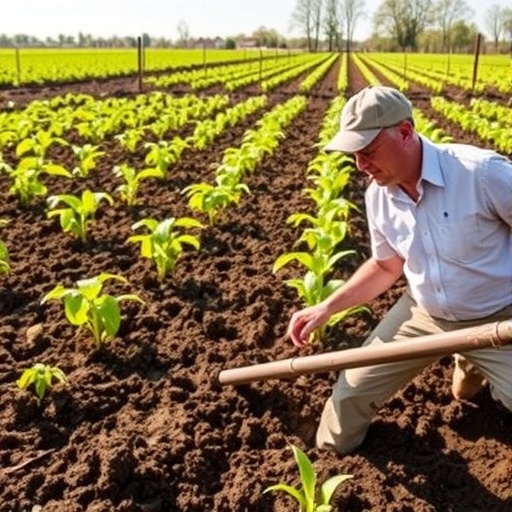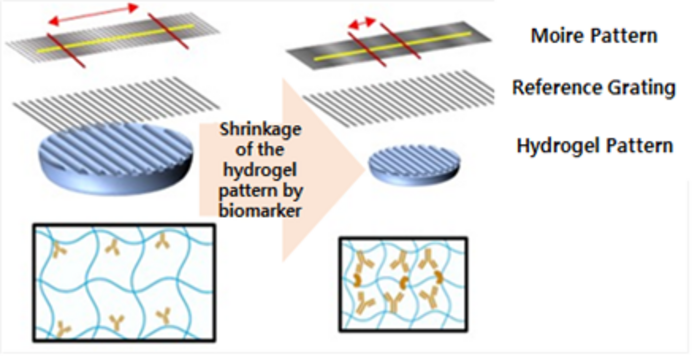A groundbreaking discovery by molecular biologists at Aarhus University is poised to revolutionize agricultural sustainability by unlocking the genetic potential for nitrogen fixation in staple cereal crops. The study, led by Professors Kasper Røjkjær Andersen and Simona Radutoiu, unveils a precise molecular switch within plant immune receptors that can be reprogrammed to enable a symbiotic relationship with nitrogen-fixing bacteria, a trait traditionally confined to legumes. This advancement heralds a future where vital crops such as wheat, barley, and maize might naturally enrich their nitrogen supply, drastically reducing reliance on synthetic fertilizers and curbing environmental damage.
Nitrogen is an essential macronutrient driving plant growth and productivity, yet only a select group of plants can directly harness atmospheric nitrogen. Legumes—including peas, clover, and beans—achieve this feat through a symbiotic partnership with rhizobia bacteria that convert inert atmospheric nitrogen gas into bioavailable forms. Most global staple crops lack this ability, depending heavily on artificial nitrogen fertilizers. These fertilizers, primarily produced through energy-intensive processes like the Haber-Bosch method, account for approximately two percent of worldwide energy consumption and contribute significantly to greenhouse gas emissions, notably CO2. Therefore, enabling cereals to fix nitrogen autonomously would represent a seismic shift in sustainable agriculture.
Central to this breakthrough is the molecular architecture of receptors situated on the root cell surfaces of plants. These receptors function as sentinels, interpreting chemical signals from soil microorganisms to determine whether an invader is pathogenic or symbiotic. The Aarhus team’s research elucidates that minute alterations—specifically, substitutions of just two amino acids—within a specialized region they term Symbiosis Determinant 1 (SymD1) can toggle these immune receptors from activating defense mechanisms to facilitating a symbiotic dialogue. This elegant molecular switch enables the plant to discern ‘friend’ bacteria capable of nitrogen fixation and permit their ingress, while still defending against harmful microbes.
The researchers validated this mechanism initially in Lotus japonicus, a model legume species. Through precise genetic editing, they replaced two critical residues within the receptor’s protein structure, effectively rewiring its signal transduction pathway. Instead of initiating immune responses, the modified receptor allowed nitrogen-fixing bacteria to colonize the root tissues harmoniously. Extending these findings, the team demonstrated that the same molecular principles apply to barley—a major cereal crop—thus proving the concept’s broad relevance. This opens promising avenues for engineering cereals that can independently engage in nitrogen-fixing symbiosis.
The implications of engineering nitrogen-fixing cereals are profound. Cereal crops serve as the primary calorie source globally, yet their heavy fertilizer dependency is a linchpin for escalating production costs, resource depletion, and environmental pollution. By rendering these crops self-sufficient in nitrogen acquisition, agricultural systems could drastically diminish fertilizer inputs, decreasing fossil fuel consumption and greenhouse gas emissions. Such crops would concurrently promote soil health and reduce nutrient runoff that leads to ecological eutrophication. Ultimately, this breakthrough aligns with urgent global goals for climate mitigation and sustainable food security.
The molecular toggle identified involves nuanced structural dynamics within the plant’s immune receptor proteins. Normally, these receptors detect microbe-associated molecular patterns (MAMPs) triggering innate immune defenses that exclude potentially harmful bacteria. However, nitrogen-fixing bacteria secrete nodulation factors that require receptors to suppress immunity and initiate symbiosis. The two amino acid residues at the heart of this study function as a biochemical switch within the receptor’s ligand-binding domain, reconfiguring receptor conformation and downstream signaling cascades. This subtle yet impactful reprogramming illustrates the exquisite molecular finesse plants employ to balance immunity and mutualism.
Despite these advances, the path toward widespread agricultural deployment remains challenging. The molecular switch is a crucial component but not the sole determinant of successful symbiotic nitrogen fixation in cereals. Other genetic, physiological, and ecological factors governing root architecture, bacterial infection, and nodule formation must be elucidated and integrated into breeding or biotechnological programs. Moreover, rigorous field assessments will be essential to evaluate the stability, efficacy, and environmental interactions of engineered crops under diverse agronomic conditions. Nonetheless, this discovery represents a pivotal foundational step toward these ambitious goals.
Moreover, this research prompts a paradigm shift in how plant-microbe interactions are conceptualized. The conventional model stratified microbes as strictly pathogenic or beneficial, but these findings underscore the plasticity of plant immune systems, which can be finely tuned to cooperate with symbionts. Understanding these molecular dialogues enriches broader scientific fields including plant immunity, microbiome ecology, and evolutionary biology. It also paves the way for innovative biotechnologies that leverage microbiomes for crop resilience and productivity enhancement.
The study was conducted using state-of-the-art experimental methodologies encompassing site-directed mutagenesis, receptor-ligand binding assays, genetic transformation, and symbiotic phenotype characterization. By integrating molecular biology, biochemistry, and plant physiology, the researchers were able to dissect receptor function at unparalleled resolution. The high specificity and reproducibility of their approach underscore the robustness and translational potential of the findings.
The team’s work was recently published in the prestigious journal Nature, marking a significant milestone in plant science research. The article titled “Two residues reprogram immunity receptors for nitrogen-fixing symbiosis,” provides comprehensive insight into the genetic and molecular basis for reengineering plant immunity to facilitate sustainable nitrogen fixation. The authors also highlighted the necessity for continued investigations to identify additional genetic components and environmental interactions essential for extending this symbiotic capability to major cereal crops.
Altogether, this discovery sets the stage for innovative agricultural practices that intertwine molecular genetics and ecological stewardship. Given the mounting pressures of climate change, soil degradation, and global food demand, deploying nitrogen-fixing cereals could substantially mitigate environmental footprints and enhance food system resilience. As these findings ripple through the scientific community, they herald a transformative era where crop plants themselves become architects of their nutrient economies, reducing humanity’s dependence on synthetic inputs.
As research progresses, collaborations between molecular biologists, breeders, agronomists, and ecologists will be pivotal to translating this fundamental discovery into practical applications. Unlocking the full nitrogen-fixing potential in cereals promises to reshape agricultural landscapes, fostering sustainability while maintaining high yields. The realization of self-fertilizing cereal crops may soon turn from a visionary concept to an agricultural reality, thanks to this molecular breakthrough from Aarhus University.
Subject of Research: Not applicable
Article Title: Two residues reprogram immunity receptors for nitrogen-fixing symbiosis
News Publication Date: 5-Nov-2025
Web References: https://doi.org/10.1038/s41586-025-09696-3
Image Credits: Cliff from Arlington, Virginia, USA (Wikimedia Commons)
Keywords: Nitrogen fixation, plant immunity, symbiosis, cereals, molecular biology, receptor reprogramming, sustainable agriculture, legume symbiosis, genetic engineering, nitrogen utilization, environmental sustainability, Aarhus University
Tags: Aarhus University agricultural studyadvancements in plant immune receptorsagricultural sustainability researchenvironmental impact of agriculturefuture of nitrogen-fixing cropsgenetic engineering for crop improvementgreenhouse gas emissions from fertilizersmolecular biology in agriculturenitrogen fixation in cereal cropsreducing synthetic fertilizers in agriculturesustainable farming innovationssymbiotic relationships in plants






